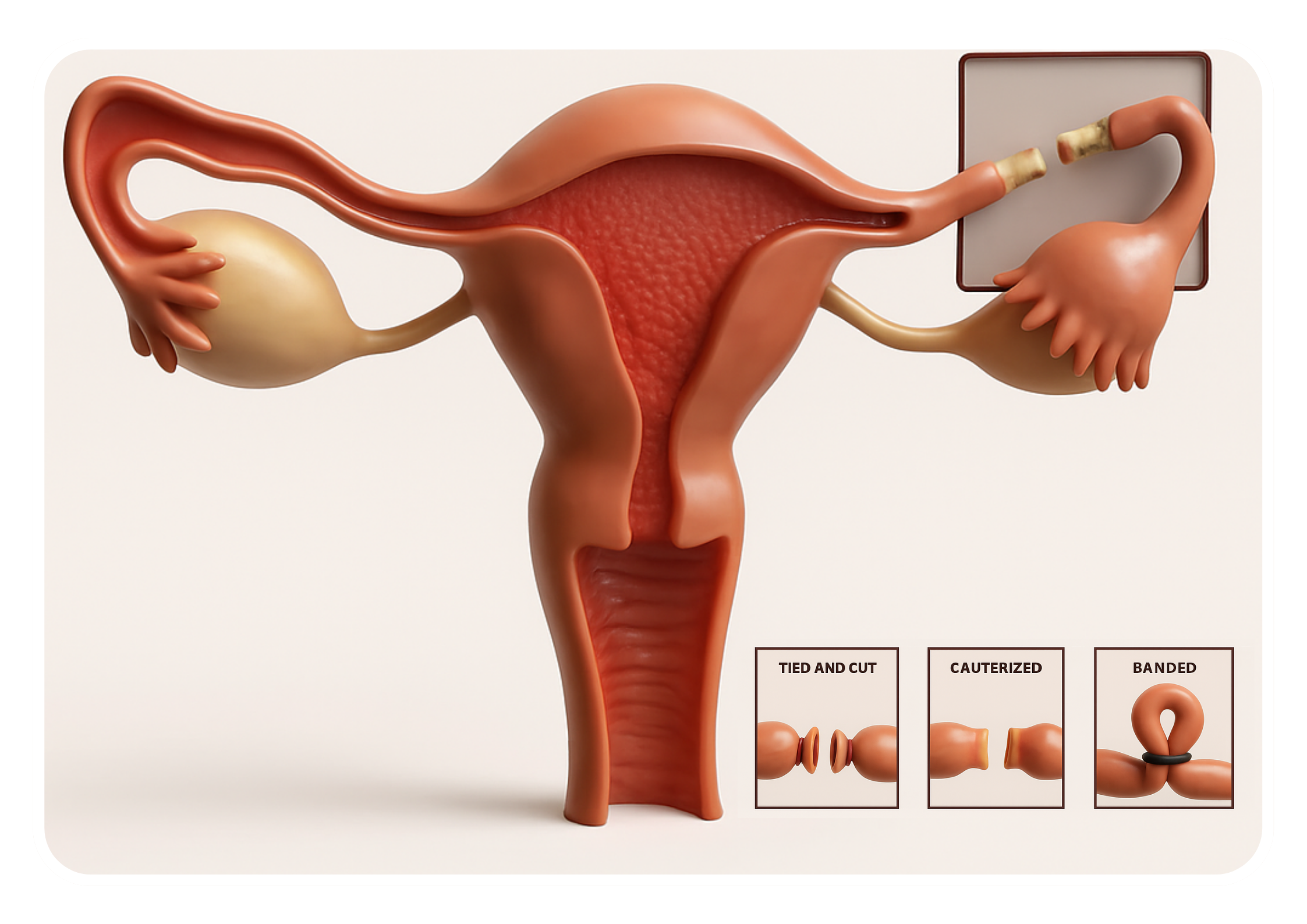Indications
Laparoscopic tubal ligation is indicated for women who have completed their desired family size and wish to permanently prevent pregnancy. It is a highly effective form of contraception and is considered a permanent sterilization procedure.
Preoperative Evaluation
Before undergoing laparoscopic tubal ligation, patients typically undergo a comprehensive preoperative evaluation, including:
- Medical History Review: Assessment of the patient’s overall health and any underlying medical conditions.
- Physical Examination: A thorough physical check-up.
- Counseling: Discussion regarding the risks, benefits, and alternatives to tubal ligation, including other contraceptive options and the irreversibility of the procedure.
Surgical Technique
Laparoscopic tubal ligation is performed under general anesthesia in an operating room equipped for laparoscopic surgery. The procedure involves the following steps:
- Anesthesia: The patient is placed under general anesthesia.
- Incisions: Several small (typically 0.5 to 1 cm) incisions are made in the abdomen, usually around the belly button and lower abdomen.
- Trocar Placement: Trocars (hollow tubes) are inserted through the incisions to provide access for the laparoscope and specialized instruments.
- Visualization: A laparoscope is inserted through one of the trocars to provide a magnified view of the pelvic organs, including the fallopian tubes. Carbon dioxide gas is used to inflate the abdominal cavity, creating space for visualization and instrument manipulation.
- Tubal Occlusion: The fallopian tubes are identified, isolated, and occluded (blocked or sealed) to prevent the passage of eggs from the ovaries to the uterus. Different techniques may be used for tubal occlusion, including:
- Tubal Ligation Clips or Rings: Small clips or rings are placed across the fallopian tubes to block them.
- Electrocoagulation or Cauterization: The fallopian tubes are sealed using heat energy (electrocautery) or electrical current.
- Fallopian Tube Removal: In some cases, a segment of the fallopian tube may be removed (salpingectomy) to achieve sterilization.
- Closure: After tubal occlusion is completed, the instruments are removed, and the small incisions are closed with sutures or surgical glue. Dressings may be applied, and the patient is typically monitored in the recovery area before being discharged home.
Advantages
- Highly Effective: Laparoscopic tubal ligation is a highly effective form of contraception, with a very low failure rate.
- Minimally Invasive: The procedure involves smaller incisions, resulting in less postoperative pain, reduced blood loss, shorter hospital stays, and faster recovery times compared to traditional open surgery.
- Permanent Contraception: Laparoscopic tubal ligation provides permanent sterilization, allowing women to avoid the need for ongoing contraception and contraceptive-related side effects.
Considerations
- Contraceptive Counseling: Patients considering laparoscopic tubal ligation should receive comprehensive contraceptive counseling to ensure that they understand the risks, benefits, and alternatives to sterilization. Counseling should also include a discussion of other long-term reversible contraceptive options for women who may have future fertility desires.
- Surgical Expertise: Laparoscopic tubal ligation requires specialized training and expertise in laparoscopic techniques. Surgeons should be proficient in minimally invasive surgery and familiar with the nuances of tubal ligation to ensure optimal outcomes.
Conclusion
Laparoscopic tubal ligation is an effective and permanent form of contraception for women who have completed their desired family size. When performed by experienced surgeons in appropriately selected patients, laparoscopic tubal ligation offers the advantages of minimally invasive surgery, reduced morbidity, and reliable contraception.
At Bliss IVF, our team of skilled surgeons and healthcare providers is dedicated to offering the highest standard of care. We are committed to helping you understand your treatment options and guiding you through your surgical journey with expertise and compassion.

